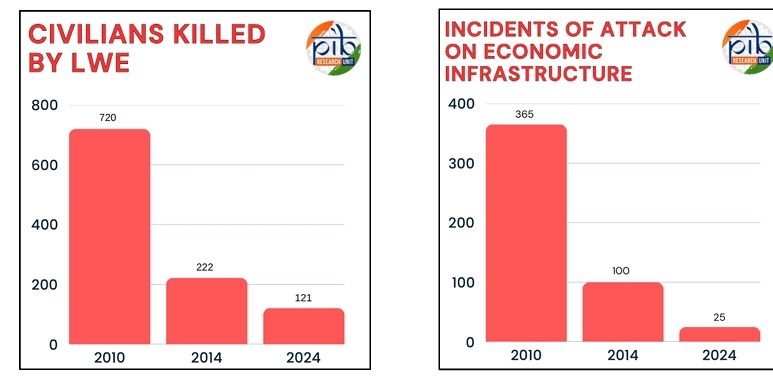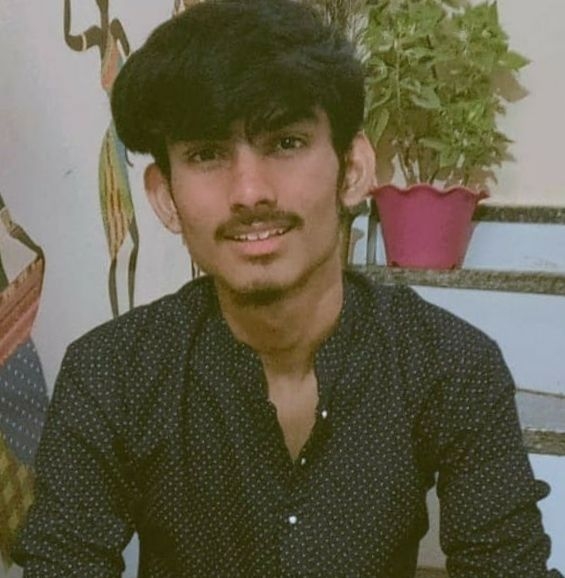From Red Zones to Growth Corridor, the Not-Too-Far Road to ‘Naxal Mukt Bharat’
India’s strong push against Naxalism is turning former red zones into growth hubs, with a clear goal of a Naxal-free nation by 2026.
Total Views |

The BJP government, either in the centre or in the respective states, has always kept national security over the top priority of everything, with the honourable Defence Minister Shri Rajnath Singh, applauding Operation Sindoor and crediting the brave Indian Army in the Parliament, for being the torch-bearer of ‘Nyay’(justice) with ‘Jin Mohi Maara tin Mohi Maare’ (refering to the principle adopted by Lord Hanuman while destroying Ashoka Vatika) hailing Indian armed forces for their precise, proportionate strikes on terror hubs in Pakistan and PoK under Operation Sindoor, vowing justice for the victims of the April 22 Pahalgam terror attack; Shows the nature of Indian Culture and how the current government is committed to it, to give justice to the seekers, looking with hope towards the Indian government.
And under that same lens falls the issue of Red Terrorism, where the government is fully dedicated to eradicating it from the regions of India suffering its venom. And in commitment to it, Honourable Home Minister Shri Amit Shah committed that by 31 March 2026, India would be completely free from Naxalism.
However, the neutralisation of Naxal areas and movements can be traced down in figures too. A report from PIB says, “The number of LWE-affected districts was reduced from 126 to 90 in April 2018, 70 in July 2021, and further to 38 in April 2024. Out of the total Naxalism-affected districts, the number of most affected districts has been reduced from 12 to 6, which include four districts from Chhattisgarh (Bijapur, Kanker, Narayanpur, and Sukma), one from Jharkhand (West Singhbhum), and one from Maharashtra (Gadchiroli). Similarly, out of the total 38 affected districts, the number of Districts of Concern, where additional resources need to be intensively provided beyond the severely affected districts, has reduced from 9 to 6. These six districts are Andhra Pradesh (Alluri, Sitrama Raju), Madhya Pradesh (Balaghat), Odisha (Kalahandi, Kandhamal, and Malkangiri), and Telangana (Bhadradri-Kothagudem). Due to persistent action against Naxalism, the number of other LWE-affected districts has also decreased from 17 to 6. These include the districts of Chhattisgarh (Dantewada, Gariaband, and Mohla-Manpur-Ambagarh Chowki), Jharkhand (Latehar), Odisha (Nuapada), and Telangana (Mulugu). "In the last 10 years, over 8,000 Naxalites have abandoned the path of violence, and consequently, the number of Naxal-affected districts has reduced to fewer than 20.”

Further, the report also mentions that whereas in the year 2010, 720 innocent civilians were preyed upon by LWE, it reduced to the number of 121 in 2024, and the incidents of attack on economic structures have also reduced from 365 in 2010 to just 25 in 2024.
This comes as a result of the strong and visionary leadership of PM Narendra Modi and his cabinet, which, under the Action Plan (2015), has adopted a zero-tolerance approach towards the LWE and the implementation of government schemes even in LWE-marked areas, to fully develop the Red Zones into Growth Corridors.
The approach of the government doesn’t just aim to establish the rule of law by taking instant action against the red terrorists but also to sanction immediate compensation for the losses in the areas being deprived of development due to the deep-rooted Naxal activities.
Addressing all such LWE menaces, the National Policy and Action Plan was approved in 2015, which envisages a multi-pronged strategy involving security-related measures, development interventions, ensuring rights and entitlements of local communities, etc.
The PIB on its official website mentions, “The Central Government closely monitors the situation and supplements and coordinates their efforts in several ways. These include providing the Central Armed Police Forces (CAPFs); sanction of India Reserve (IR) battalions; setting up of Counter Insurgency and Anti-Terrorism (CIAT) Schools; modernisation and upgrading of the State Police and their intelligence apparatus; reimbursement of security-related expenditure under the Security-related Expenditure (SRE) Scheme; providing helicopters for anti-LWE operations; assistance in training of State Police through the Ministry of Defence, the Central Police Organisations, and the Bureau of Police Research and Development; sharing of intelligence; facilitating inter-state coordination; assistance in community policing and civic action programs, etc. On the development side, apart from flagship schemes, the Government of India has taken several specific initiatives in LWE-affected states, with special thrust on expansion of the road network, improving telecommunication connectivity, skilling, and financial inclusion.”
Re-creating government in LWE areas
The roots of Naxalism often lie in grievances stemming from perceived state neglect and exploitation of tribal resources. A “Naxal Mukt Bharat” offers an unprecedented opportunity to redefine governance in these regions, moving towards genuine self-determination and economic sovereignty.
Traditional tribal governance structures, often undermined by both the previous governments and Naxals, must be re-empowered, respecting the spirit of PESA and the Forest Rights Act. This means moving beyond tokenistic representation to genuine devolution of power, allowing local communities to make decisions about their resources, development, and future.
Since April 2015, significant infrastructure development has been undertaken in Left Wing Extremism (LWE)-affected districts to foster financial inclusion, skill development, and education. Specifically, in the 30 most affected districts, 1,007 bank branches and 937 ATMs have been established. Additionally, 5,731 new post offices have been opened across all LWE-affected districts, along with the deployment of 37,850 Banking Correspondents (BCs) in the most impacted areas.

For skill enhancement, 48 Industrial Training Institutes (ITIs) and 61 Skill Development Centres (SDCs) are now operational. To improve educational access in tribal regions, 178 Eklavya Model Residential Schools (EMRSs) have been established.
Moreover, the Skill Development Scheme has reached all 48 districts, and a dedicated division of the National Investigation Agency (NIA) has been formed. Furthermore, 1,143 tribal youths have been recruited into the security forces, contributing to the overall security enhancement in these regions.
Economically, the post-Naxal landscape cannot simply revert to resource extraction. We must champion sustainable livelihoods that prioritise local communities and foster economic sovereignty. Beyond traditional agriculture, imagine integrated agro-processing zones specifically designed for tribal produce, promoting value addition to forest products, and establishing direct market linkages that cut out exploitative intermediaries. And this approach is already championed under the Double Engine Government of BJP.
Article by

Kewali Kabir Jain
Journalism Student at Makhanlal Chaturvedi National University of Journalism and Communication

